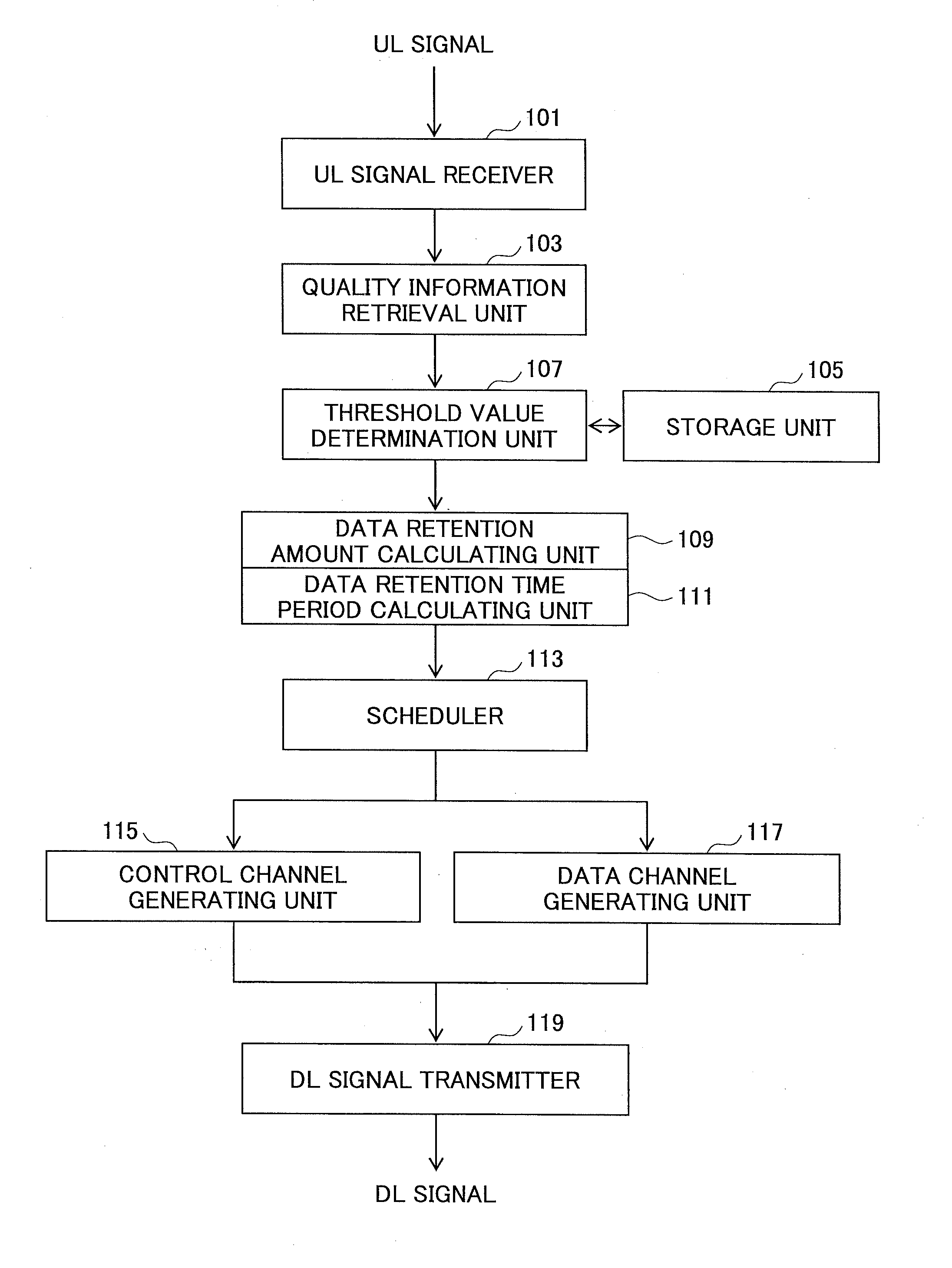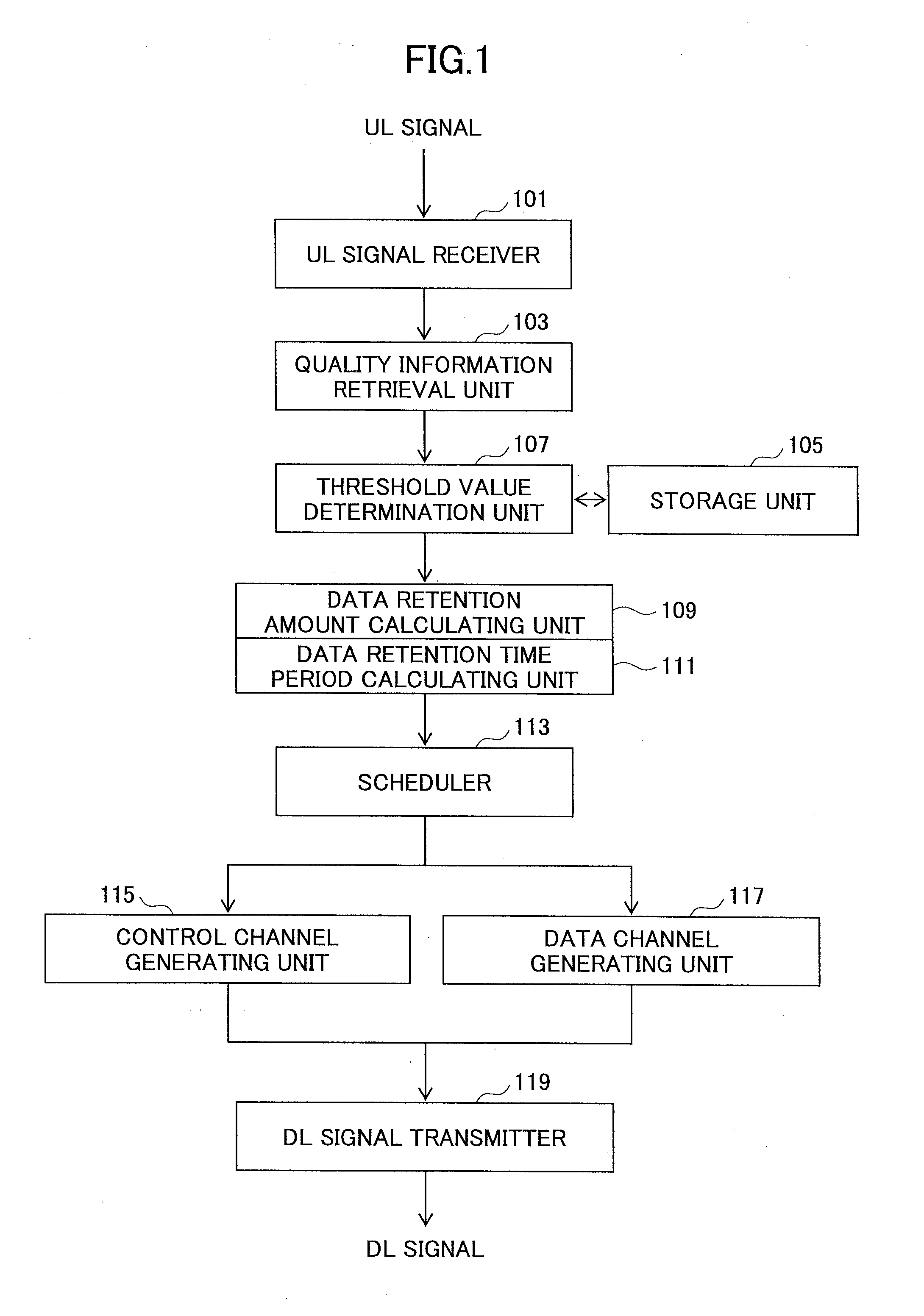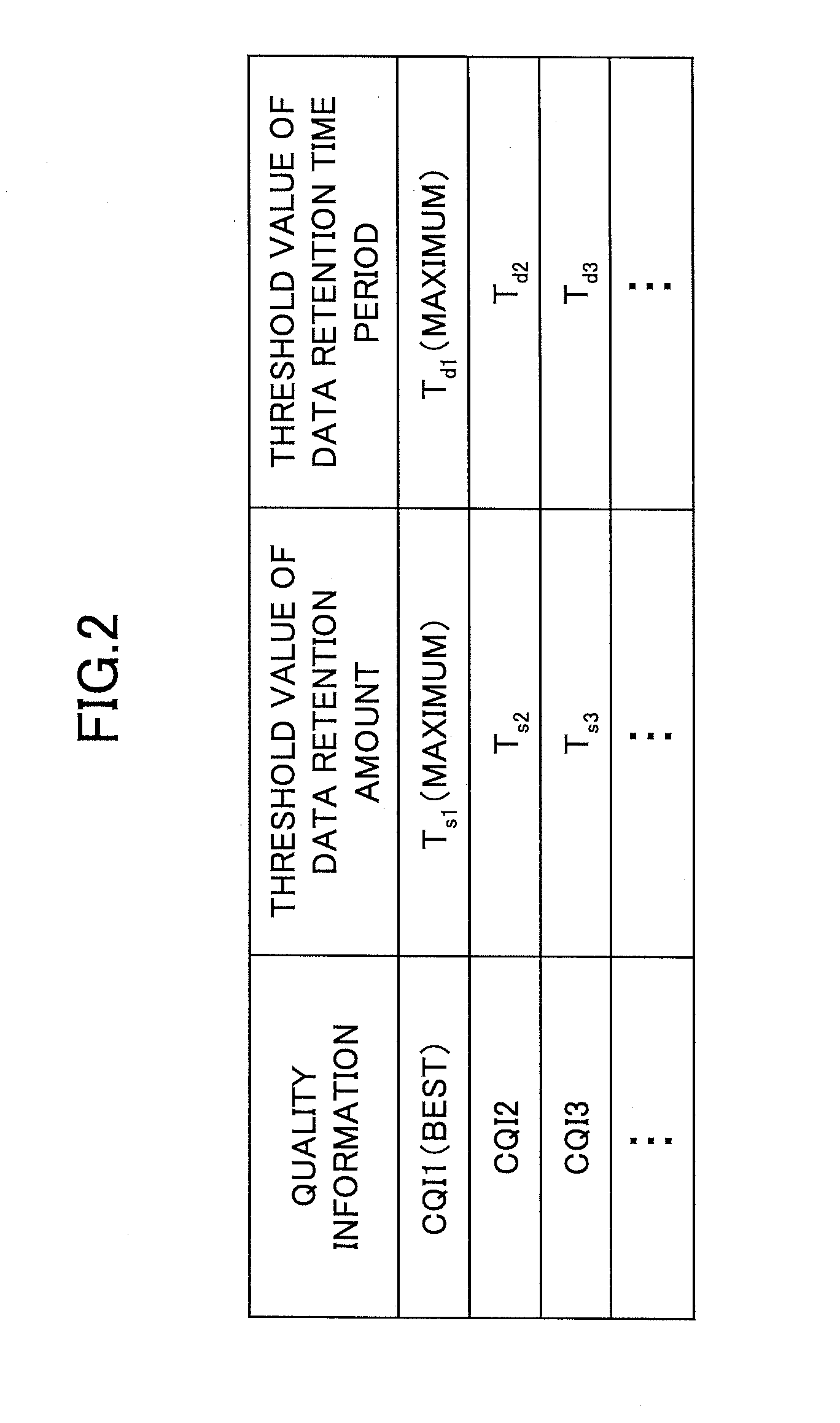Base station and scheduling method of mobile communication system
a mobile communication system and base station technology, applied in the field of base station and scheduling method of mobile communication system, can solve the problems of large overhead, not all the units of user equipment in the mobile communication system conform, and the number of users is large, so as to achieve the effect of increasing the voice capacity
- Summary
- Abstract
- Description
- Claims
- Application Information
AI Technical Summary
Benefits of technology
Problems solved by technology
Method used
Image
Examples
embodiment 1
[0019]FIG. 1 shows a functional block diagram of an eNodeB (a base station) which is used for the embodiment. FIG. 1 shows, among processing units for achieving various functions included in the eNodeB of a mobile communication system, the processing units which are particularly related to the embodiment. For convenience of explanation, it is assumed that the eNodeB shown in the figure is an eNodeB in a mobile communication system according to the long term evolution (LTE) scheme, for example. However, it may be a base station of another mobile communication system. In FIG. 1, a UL signal receiver 101; a quality information retrieval unit 103; a storage unit 105; a threshold value determination unit 107; a data retention amount calculating unit 109; a data retention time period calculating unit 111; a scheduler 113; a control channel generating unit 115; a data channel generating unit 117; and a DL signal transmitter 119 are shown.
PUM
 Login to View More
Login to View More Abstract
Description
Claims
Application Information
 Login to View More
Login to View More - R&D
- Intellectual Property
- Life Sciences
- Materials
- Tech Scout
- Unparalleled Data Quality
- Higher Quality Content
- 60% Fewer Hallucinations
Browse by: Latest US Patents, China's latest patents, Technical Efficacy Thesaurus, Application Domain, Technology Topic, Popular Technical Reports.
© 2025 PatSnap. All rights reserved.Legal|Privacy policy|Modern Slavery Act Transparency Statement|Sitemap|About US| Contact US: help@patsnap.com



